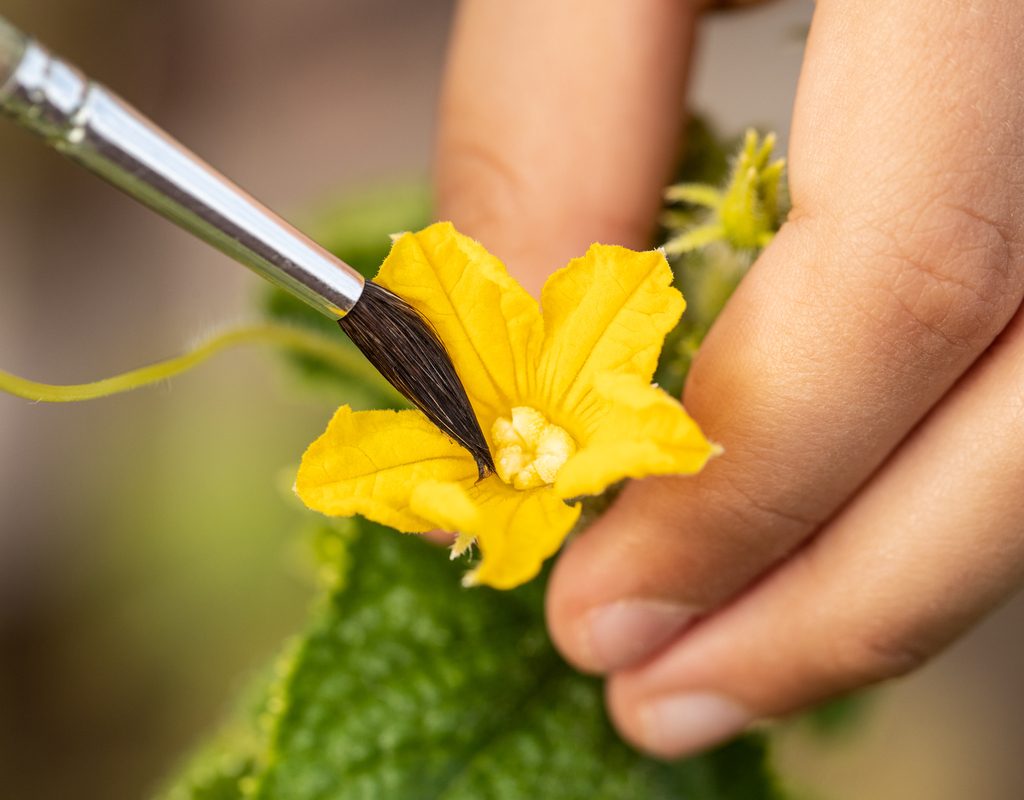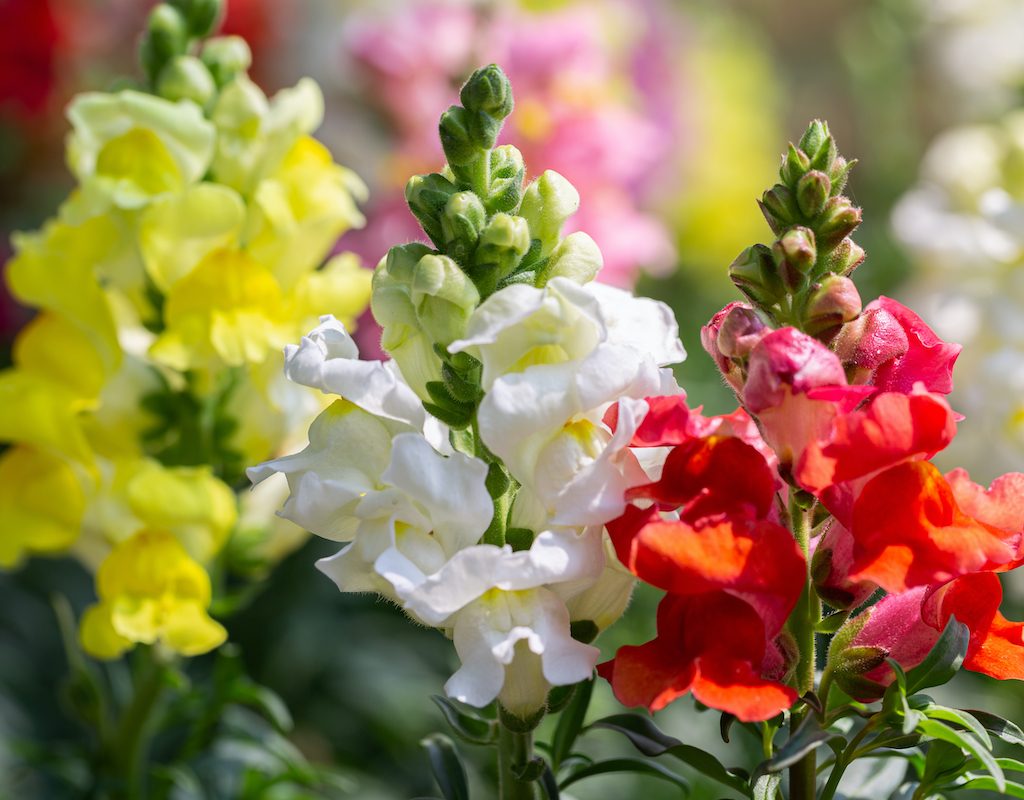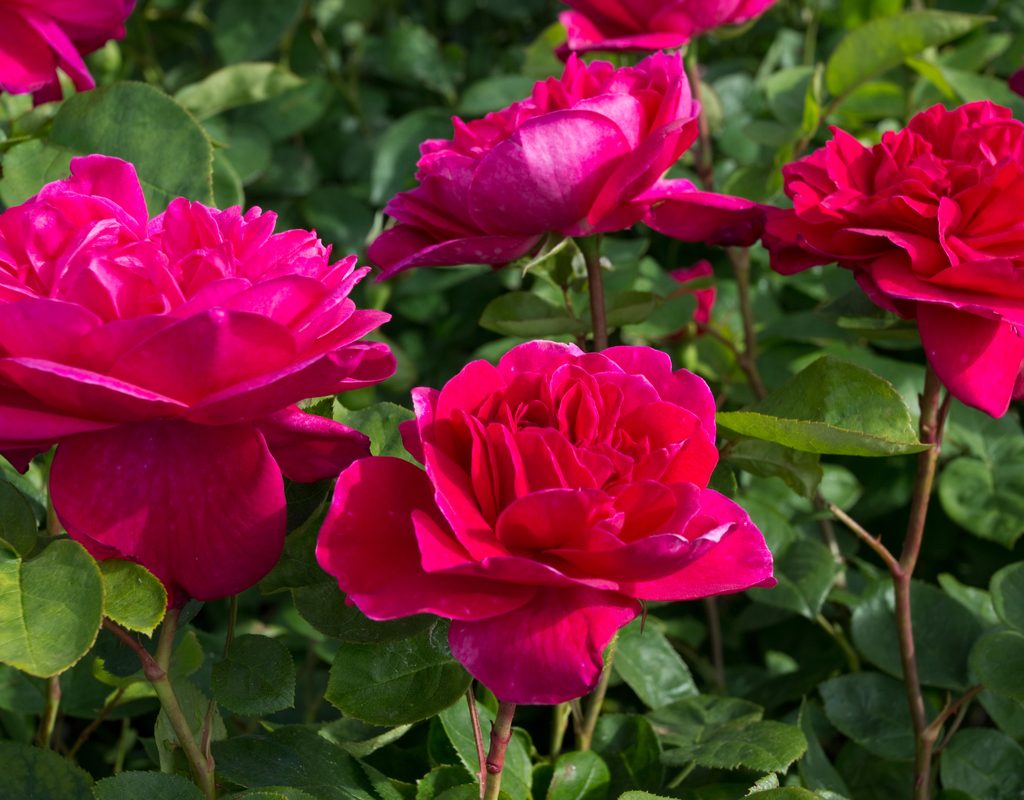Most of the time, gardeners leave pollination to the pollinators. Bees and butterflies and other such creatures do the work of moving pollen around. Sometimes, though, it can be fun or even necessary to take on a little of that work ourselves. Cross-pollination can be a useful tool if pollinators haven’t been visiting your garden or if you’re interested in experimenting with colors or hybrids. How does it work, though, and what plants should you start with? Here’s an easy guide to answer your cross-pollination curiosities.

How does cross-pollination work?
Plants fall into one of two categories when it comes to pollination. Self-pollinating plants can produce one or more flowers that can pollinate themselves or each other. Cross-pollination occurs when pollen from a plant fertilizes a flower from another plant that is the same species but a different variety — or, on more rare occasions, a different but related species.
Since cross-pollinating requires multiple plants, there’s more genetic diversity and more opportunity to create interesting colors, shapes, or patterns. You can use this to your advantage, cross-pollinating two different plants in an attempt to create a specific flower color.
You can cross-pollinate your plants by planting multiple varieties of the same plant next to each other and hoping a pollinator does the work; but, the more reliable method is to hand pollinate your plants. There are two ways to go about this, depending on the shape of the flower and your preferences. You can pick one of the flowers and rub it on the other flower, or you can gather pollen from one flower using a cotton swab or paint brush and apply it to the other flower.
If you have a particular goal in mind and want to be especially thorough, you can place a small bag or other material over the flower after cross-pollinating it to keep pollinators out. This ensures that the flower uses only the pollen you want it to use. The seeds that that flower produces will show the results of your cross-pollination, so you’ll need to collect and plant those seeds to find out the results.

What are the limitations of cross-pollination?
Genetics are complicated, so the results of cross-pollination are not always what you wanted or expected. There’s no way to guarantee specific results. Certain colors or patterns may be genetically impossible for flowers to produce. Plus, other genes that can’t be seen or that you may be unaware of can interfere with the flower’s color, changing the outcome in unexpected ways.
Some traits may take multiple generations to show up or create, making cross-pollination more of an ongoing process than a one-time experiment. This can make for fun, unexpected color or pattern variants even after you’ve stopped cross-pollinating, but it can also be a frustrating challenge for those who like to see quick results.
Hybrids, or plants created from the cross-pollination of two plants of different species, are not always fertile. Additionally, new traits that are produced from cross-pollination don’t always stick around and can disappear after a few generations. However, they can still be lovely while they last! If they do last, you may have created a new variety or new species of plant.

What are the easiest plants to cross-pollinate?
While any plant can, technically, be cross-pollinated, some are more rewarding than others. Look for plants that grow and reproduce more quickly. Cross-pollinating a new type of apple, for example, would be exciting and potentially delicious, but apple trees grow slowly — meaning it will take longer to know if your efforts were successful.
Flowers are often the most visually rewarding plants to cross-pollinate. Vegetables that already have a variety of visual differences, such as pumpkins, can also be interesting to breed, but remember that cross-pollination could also affect the texture and flavor of a vegetable.
The best flowers to cross-pollinate are those that do so naturally. Avoid self-pollinating plants, such as cucumbers, and look for plants that, in the wild, would be cross-pollinating to get their pollen. Primrose, iris, daffodils, tulips, and most berries are excellent choices.
For beginners, you may find it easiest to start with flowers that already have a range of colors or patterns available. If you’ve set a certain goal, be mindful of that when you’re choosing varieties. For example, if you’re trying to create a pale pink rose, choose white roses and light pink roses, potentially multiples of each. Roses, snapdragons, daisies, chrysanthemums, and peonies are good starters.
Now you’re ready to get out in your garden and start cross-pollinating your flowers. It can be helpful to keep a journal handy to record which flowers you’ve tried mixing and the results you achieved. Cross-pollination is a great way to enrich your garden, and, if you’re lucky and patient, you may even create a new variety of flower! Not every cross-pollination venture is a success, but you can achieve some really interesting results with just a paint brush or cotton swab and a few colorful flowers.


